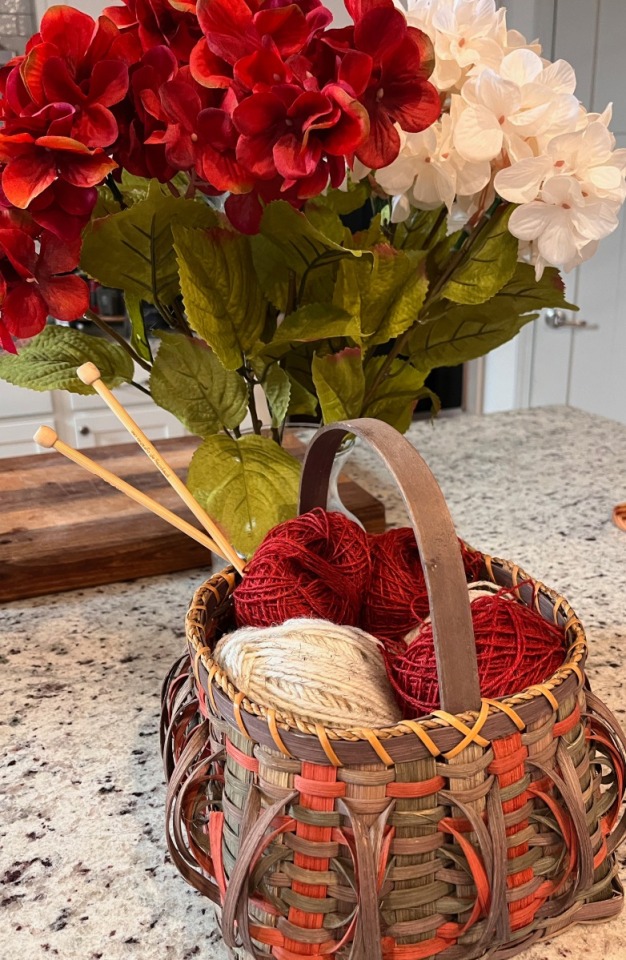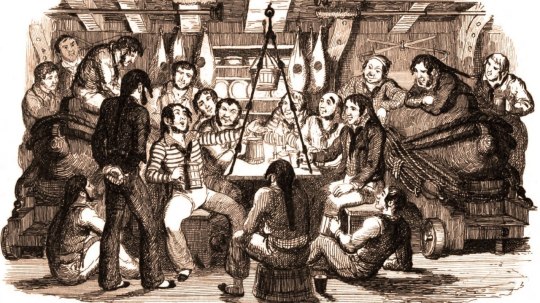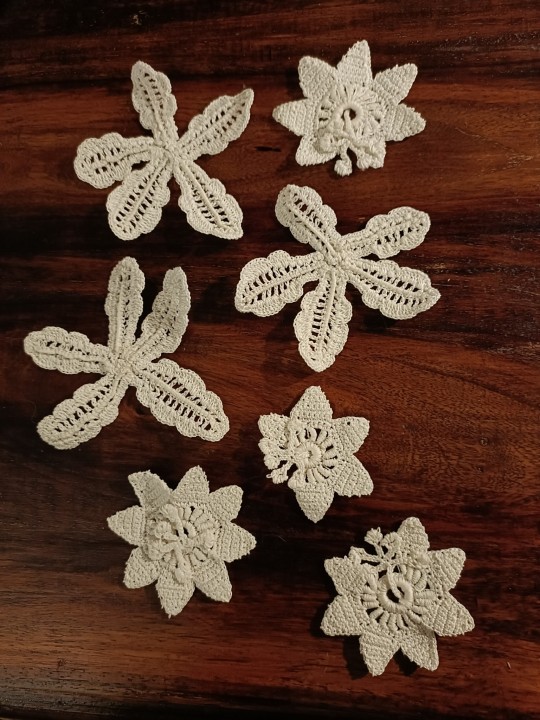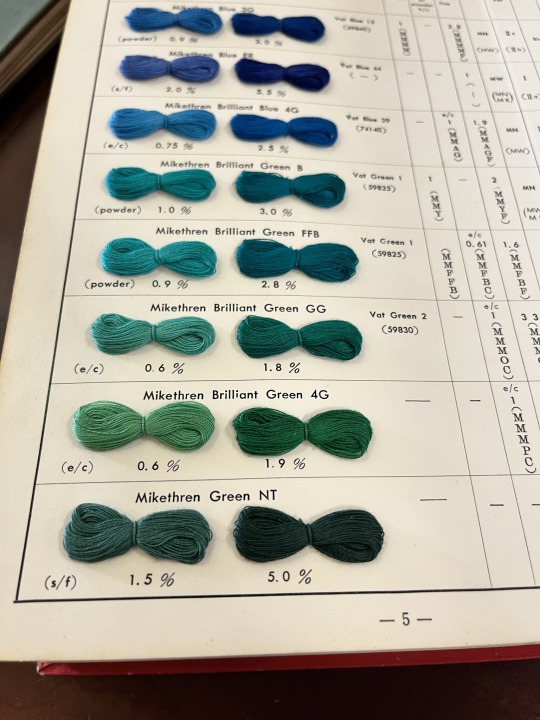#history of yarn
Text
Yarn – It’s Fundamental to Human Culture
In researching for my next Prayer Shawl Chronicles book, I've been shocked to discover how much time and work went into yarn making. Appreciate those precious skeins!
We’ve all seen the memes. “My other hobby is buying yarn.” “My yarn stash exceeds my expected lifespan.” “Yarn is like chocolate; you can never have too much.”
We treat yarn as if there’s an abundant worldwide stash ready for us to buy, in any amount. Craft stores literally stock enough yarn to reach the ceiling. You can obtain yarn for any project you have in mind with a couple of clicks on…

View On WordPress
#history of knitting#history of textiles#history of yarn#knitting#knitting yarn#women&039;s history#yarn#yarn stash
4 notes
·
View notes
Text

"Let me give him a little moustache" 🖍️
It's been a really long time since I decided to do a more elaborated(ish?) photoedition and honestly i've been debating for a few weeks now if I should post it or not. I think it's really fun and the result is pretty nice, but I've been feeling down about my art lately, like putting in the extra effort of taking and editing this type of photos on top of everything else it's just not worth it. They're my favourite type of photos, this silly montages using different amigurumis and other resources and props, but more often than not they're the least liked on social media so... it's conflicting. And my still ongoing mental breakdown is definitely not helping either 😂
Sorry for the rambling, this is the only space where I feel safe enough to actually speak up about some of the things in my head although it's not very on par with my cute content. Anyway, the good news is that I'm investigating about crocheting clothes to make more garments for Henry and Alex and I've got a few ideas that I really hope will work out. See ya!
#amigurumi#crafts#artists on tumblr#bookish#fiber art#yarnblr#amigurumi artist#pitiplush#crochet#yarn crafts#firstprince#alex and henry#alex claremont diaz#henry fox#prince henry#rwrb#rwrb fanart#casey mcquiston#red white and royal blue#history queue? bet we could make some
346 notes
·
View notes
Text

Had a recent ask about my spinning wheel decals, so I thought I'd give a "tour"/story time about it.
I bought my wheel secondhand in January of 2020, after having borrowed a wheel from my museum workplace for a few months, to practice my spinning over the winter. Of course, we did not go back to work in March 2020, and I suddenly had a lot of quality time with my new-to-me Ashford Traditional.

That same spring, my husband and I started keeping bees! And both being history nerds, myself a literal medievalist by training, I suggested that we paint or decal the new hives with an Anglo-Saxon charm for keeping your bees happy and from swarming away:
Sitte ge, sīgewīf, sīgað tō eorðan,
næfre ge wilde tō wuda fleogan,
beō ge swā gemindige, mīnes gōdes,
swā bið manna gehwilc, metes and ēðeles.
We ended up with me making a sort of stencil with vinyl cut on a Cricut, and the letters that were removed ended up on my spinning wheel! I'd already made the flowers so I managed to fit the words into the space left, but that meant I only had room for the first line of the charm.
And it's been a great wheel for the last 4 years! I only paid $250(?) for it and bobbins and a bobbin rack, which is about a quarter of the cost of a new one, so I got my money's worth! I've only had to make minor fixes to it, which is normal for a wheel I use all the time.
I no longer work a job where I spin in front of the public, but two years ago, I became a full time woodworker for another museum and I plan on someday building my own wheel!
72 notes
·
View notes
Text
So I decided to learn to knit! I've never before found a way to ethically and cheaply get yarn. I found a little ball of yarn outside at some point, as one does, and saved it, but beyond that I didn't have any other tools. Then I saw a video showing how you can take a thrifted machine-knit sweater, and undo it back into yarn, and then just knit with that. Incredible, since I have a full box of old sweaters, I just need to figure out which ones are easily undone.
So I grabbed my little ball of found yarn, and then I needed some needles. I looked up what I could use instead, and found there's plenty of alternatives; pencils, chopsticks, wooden sticks for barbecue. Looking around my room I realized I had some very long paintbrushes; I tried to use them, and immediately realized they need to have a pointy end. I grabbed a pencil sharpener and sharpened them; only this made them very rough and splintered. I needed to sand them down, but I had no sandpaper, and then I remembered that recently someone gave me a flat tool that removes dry skin from feet. I sanded them down with that, and it actually worked, they worked perfectly like knitting needles. They're even the same size.

The knitters probably already know this, but if you start knitting for the first time, especially if it's winter and you're under a blanket, some ancient human instinct will activate and you will feel that you are doing exactly what you're supposed to be doing and everything is well and right with the world. Creating fabric is a powerful thing to do, in a society where everyone needs fabric to stay alive, and go outside, and I like having this power to myself.
I found out there are two basic types of stitches; knit stitch, and purl stitch. I liked the knit stitch better, on the basis that purl stitch had 'bad vibes'.
It knew before that most fabric will be woven, or knitted, or in some cases, crochet, so I got little curious, and studied each layer of clothing on me, and every single item of clothing was knit, and it was all a purl stitch. I got fascinated by this, wondering if this is true for most clothing, or if I just somehow prefer knit things on me because they're nice and stretchy. Looking into other fabrics, I could easily tell that all of the sheets, pillowcases and kitchen cloths were woven, and that they were much sturdier and less stretchy for it.
I looked at stuff in my closet, and found that I had a scarf, hat, and pants that were woven, but in very soft and warm fabric, and they were very sturdy and non-stretchy as well. I then wondered what was the logic behind it, and is there a traditional type of things that will be woven, that isn't just bedsheets and cloths?
I tried to find a video on youtube detailing that stuff, but no female-made video was found, so I'm now downloading several women-written audibooks on the topic of history of textiles. I think we should just take the power to make textiles back to us, because back when women were the maker of the cloth, it was just something we 'did out of the goodness of our hearts for our families' but it was also environmentally friendly, practical, sustainable and a beautiful, powerful craft. Now that m*n decided it's something to make money off, they created fast fashion, tons of waste and environmental damage, new types of slavery for workers, and the clothing isn't even practical anymore, it's made to fall apart.
So, back to my knitting, I have to say it's not happening very fast, I thought by the end of the day I would be done with that little ball of yarn and be able to tell how much fabric it can make, nope, did not happen, in fact I've been working on it two days and by this time I've barely made any progress. Apparently the 'purl stitch' is faster, well, I'm still refusing to do it. Boo purl stitch. The yarn I found outside is some of the worst quality yarn I've ever seen, not only it's different in thickness everywhere, but in some places there are 3-4 different threads distangled from each other, and it confused me so much while knitting that I kept adding stitches on the brush unnecessarily, until the entire thing could barely fit on one.
One thing that surprised me was how incredibly soft, stretchy and comfortable the fabric feels when made. I genuinely expected the fabric to be as horrifying as the yarn quality, nope, it's nice and comfy I absolutely love it.
There is a movement in online spaces for being mindful of environment when purchasing clothing, and making our own wardrobes, which is absolutely delightful; seeing people gain new respect and fascination for clothing, sewing and textile making, and then doing it themselves and becoming non-dependent on capitalism, it's the change the world needs. I didn't think I would try to join in, because I get so much discarded and unwanted clothing from others, I wouldn't need to buy any ever, but I did get fascinated by looms, natural fibers, and women doing all that work, that I can't resist trying it out.
#knitting#making textiles#yarn#learning to make fabrics#making fabrics#craft#history of textile#knits weaving and crochet
120 notes
·
View notes
Text

So I managed to make a transcript for this part in the new Mystery Files episode (bits in bold are parts I'm not sure about please feel free to fill them in):
"This guy is a freaking nerd!
[Laughter]
Hijacked!
[Laughter]
You find a way to try and hold on.
[Laughter]
Oh, I'm sure I have a masterpiece for the Watcher Entertainment nerds!
[Laughter]
Oh Bergara when he does he's a little dirty.
[Laughter]
He sent me to the past but I'm back baby! Oh yes!"
#what are you playing at watcher????#please pay for my next spool of yarn for my corkboard I'm running out#mystery files#shane madej#ryan bergara#puppet history#watcher#we are watcher#watcher entertainment
176 notes
·
View notes
Text

Esther jacket beginning ✨
#I've had this yarn for WAY TOO LONG!!!!!#i think this is finally it's home#knit all of that yesterday oops#i was so productive???#figured out where i was stuck on a character's history#rambled a Lot about a key part of champion au#laundry!!!!#and this#and even some room cleaning#feels nice to have a filled Saturday#knitting#lionknits#knitblr#sweater knitting
22 notes
·
View notes
Text
Hey y'all! A word of advice about going to a new doctor (this is US-based, but I think might be applicable to more than just that):
If they do not ask you for your medical history, that is not a good sign
#the person behind the yarn#medical mention#I went to a neurologist and they did not ask ANYTHING about my medical history#except about my migraines and muscle spams#I means spasms but muscle spams is funnier so I'm leaving it#but like...I have two different 'does salt wrong' disorders#it is extremely implausible that my muscle spasms are NOT related to my Need More Salt disease#but they did not ask about my Need More Salt Diseases#and also my migraines are COMPLETELY fixed by benadryl so the chances of them not being allergy based is...small#I went there for issues with flashing lights and they didn't ask if I had a family history of epilepsy!!#and they kept asking if I only saw the flashing lights when I had migraines#I had to say 'when I see a physical light that is flashing it is disorienting and makes me nauseous'#before they understood I am not seeing flashing lights that don't exist#I have issues with flashing lights when the lights themselves are actually flashing#they didn't ask about concussions!!! I've had several! I had to bring it up#and the doc was like 'nah probably not important' and I was like 'I have a dent in my skull from one of the concussions'#so he did feel the dent in my skull but still!!!! why would the neurologist NOT ask if I'd had concussions??? I've had at least three!!
85 notes
·
View notes
Text
Sharing the topics you're passionate about with the world and expanding other people's knowledge is so cool and beautiful actually.
#thank you to all the weavers who taught me new things about the history of yarn crafts recently#love seeing smart and creative people talk about what they love#positivity#jlrrt speaks
17 notes
·
View notes
Text
Hey, if you need to frog something, maybe don't let it pile up into a huge yarn monster
Signed,
Somebody who totally didn't spend over an hour untangling a yarn monster
#art#fiber art#crochet#my back hurts now 👍#i'm making a blanket and decided the first one wasn't good enough#this new one is much nicer but they weren't lying when they said i'd need four skeins of 220yd (201m) yarn#i've just used up one skein and it's about as thick as two scarves ☹️#so i get to watch an ungdly amount of youtube videos#rewatching the History of the Entire World I Guess video. i'm nostalgic for the cambrian explosion ☹️☹️☹️#also why does untangling shit make you SO hungry after. does it really take that much energy#you would think i'd've learned the first time but i'm the typa guy to need to experience and fuck shit up twice apparently
22 notes
·
View notes
Text
also thanks to everyone for saying such extremely nice things about my knitting 😳😳😳
#honestly i am SO proud of it.#it's not one of history's complex lace patterns but it is large and i made few mistakes and i am very happy with my yarn and bead choices#and it is my first lace shawl! so well done me.#you are all extremely encouraging i am going to cast on another shawl immediately.#knitting#box opener#i'm so happy..... nice to me.......
27 notes
·
View notes
Text
Spinning Yarn
Spinning Yarn is the art of fictional storytelling among seafarers who could not just stay on board a ship. There were also good stories that were carried ashore and spun or even written down and printed.
Origin
The term “spinning yarn” has not existed for very long, it has only been known in writing since the early 19th century. It was James Hardy Vaux who, in his work of 1819, reported not only on his experiences as a criminal in England and later as a convict, but also on the storytelling on board the ship that transported him, which he called spinning yarn.

Saturday Night at Sea by George Cruikshank (1792 -1878)
In the 1820s this kind of art was also carried out by Greenwich pensioners and some of them were even published in newspapers under the term Spinning Yarn. But where does this term come from? Seamen often had to spend time repairing ropes on board ships. This is a time-consuming job of twisting fibres together, which was supposedly called "spinning yarn". While repairing ropes, sailors often told each other stories to pass the time. Over time, these stories came to be called "yarn" and the telling of a story came to be called "spinning yarn". Presumably, however, this practice goes back to the Middle Ages, but it is no longer possible to say for sure.
The reason for these stories
First and foremost, they were told to escape boredom and fill the hours of idleness. But the stories also fulfilled other tasks, for one thing they were there to create a bond among the comrades. For although these stories were largely fictional, they contained elements of everyday life, of the family or of one's own life story. Things that everyone on board could relate to and that created a bond.

(x)
The better the story, the higher the reputation and the higher the listenership of the narrator, which in turn could cause some discomfort on the part of the narrator, as the comrades would sometimes give him something extra to tell them an exciting new story. And it increased the likelihood that the story would be passed on ashore, which could also have positive effects for the storytellers.
But the stories also had hidden messages in them, so they could contain a warning about the behaviour towards some officials or criticism of them. But also parts about tired men and extraordinary phenomena. The ghost stories are particularly noteworthy here. They entertained but also had a lasting effect and elevated the narrator a little higher in his position among the men. after all, he was a good man for having experienced it, even if the older ones knew that it was fiction. The younger ones who had not yet had these experiences or were still too young to distinguish fiction from reality.
Yarns that were printed
Some of the stories made it into print for others to enjoy. It is important to distinguish whether the book was written by a Sailor, an author pretending to be a Sailor or an exsailor. Today we would simply put it in the category of adventure stories. But at that time Sailor adventures were something special.
Etchings of a Whaling Cruise, by J. Ross Browne 1846 is a hybrid of a logbook, journal, travelogue and yarn. For there he tells the story of a sailor and his journey on a whaler, later on a whale, and that alcohol is not a friend.

Etchings of a Whaling Cruise, with Notes of a Sojourn on the Island of Zanzibar. by John Ross Browne (1821-1875) - here the ride on a whale
The book was also read with great favour by Herman Melville. Richard Henry Dana Jr. also addresses spinning yarns in his work Two Years before the Mast.
And The Narrative of the Remarkable Occurrences in the Life of John Blatchford by unknown,18th century, but probably Blatchford himself, recounts his life as an American Sailor during the Revolution and his sacrifice for the fledgling US Navy.
Owen Chase (1797-1869), first mate of the Whaler Essex, also tells a story about the famous incident of the Whaler and its tragic fate in his book The Wreck of the Whaleship Essex. In particular, however, he emphasises the cruelty of cannibalism in his book and reports so matter-of-factly that it must have sent shivers down the reader's spine. Whether this is a classic yarn is questioned in research, but the book does not seem to have been written by Chase himself. Rather, it seems to be based on his reports and journal, which makes parts of the whole thing a yarn again, as they probably did not happen as portrayed. The same happens with Moby Dick by Herman Melville, 1851, which takes up the Essex and her story but spins his own adventure out of it.
All these stories had their subtleties, their depths and their morals or even warnings, but a good story brought men together. It relieved boredom and caused astonishment, joy or even goose bumps. Just as we experience today when someone tells us a good adventure. At this point, however, a small warning from me, if you read stories about sailors, be prepared, it could just be a yarn and therefore not necessarily real.
78 notes
·
View notes
Text
Women’s History and the History of Fabric-Making (Spoiler Alert: It’s the Same Thing)
Interested in history? The history of knitting and fabrics is also women's history. #history #fabrics #women
Did you know that if you lived just a couple of hundred years ago – and any time before that – and you’re a woman, you would have spent much of your life making fabric? Yes, we as women still do much of the cooking and cleaning in our families, though the men in our lives and households do much, much more than they did prior to the 1970’s. We still cook, and some of us even enjoy it.
Many of us…

View On WordPress
0 notes
Text

Did you KNOW?! <3 Women AND MEN used knitting during wartime to send messages as an espionage tool! An American Red Cross knitting class during World War One. Article was named: "Grandma was just making a sweater. Or was she ...?"
"When knitters used knitting to encode messages, the message was a form of steganography, a way to hide a message physically (Example: hiding Morse code somewhere on a postcard, or digitally disguising one image within another). If the message must be low-tech, knitting is great for this; every knitted garment is made of different combinations of just two stitches: a knit stitch, which is smooth and looks like a “v”, and a purl stitch, which looks like a horizontal line or a little bump.
By making a specific combination of knits and purls in a predetermined pattern, spies could pass on a custom piece of fabric and read the secret message, buried in the innocent warmth of a scarf or hat."
https://getpocket.com/explore/item/the-wartime-spies-who-used-knitting-as-an-espionage-tool?utm_source=pocket-newtab/
#artists on tumblr#infinite craft#yarn#yarnblr#fresh air#war stories#hidden#send messages#prose#history
6 notes
·
View notes
Text

Some Irish crochet motifs for a corset cover yoke🌺 They're a little wonky but I'm sure they'll block straight :)
The designs are from the 1912 Priscilla Irish Crochet book if anyone's interested!
#crochet lace#irish crochet#historical costuming#fashion history#lace making#historical sewing#historical fashion#1890s fashion#crochet#1910s fashion#crocheters of tumblr#yarnblr#yarn crafts#crochetblr#swallowbird crafts
7 notes
·
View notes
Text

Here are some cotton yarns dyed green for the Eagles! We're so excited for the Super Bowl on Sunday and hope that our Philadelphia Eagles bring home a win!
#yarn#cotton yarn#dyes and dyeing#dyes#dye samples#dye sample book#textiles#colors#colours#history#science#history of science#special collections#modern materials#modern collection#bookblr#tumblarians#eagles#fly eagles fly#its a philly thing#go birds#philadelphia eagles#philly#philadelphia#othmeralia
48 notes
·
View notes
Text

Le Destin, Henry Siddons Mowbray (1896)
#I actually really like this representation of the Fates because they seem so involved and focussed and concentrated on their work.#also the ball of yarn they're using looks a bit like the Earth (blue and continents) and instead of just a yarn they're making a tapestry#but it also looks like a desk or a table for maps - like a board for strategising#mythology#art#history
186 notes
·
View notes